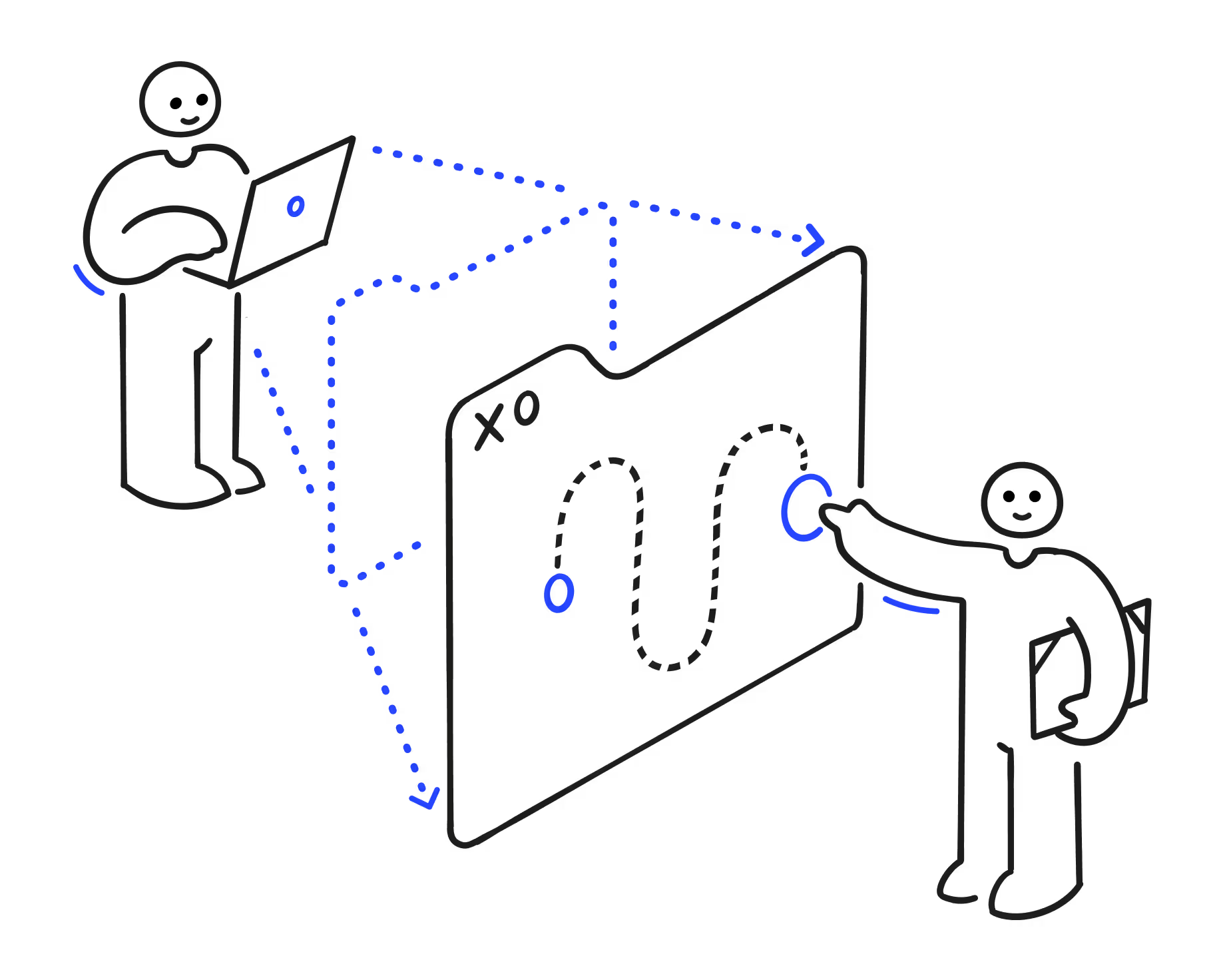Employee satisfaction: Why it matters and how to improve it

Discover Workleap Officevibe's benchmark report on 12 key employee engagement metrics

While flashy perks and splashy initiatives grab headlines, it’s the everyday experiences—how employees feel about their work, their team, and their growth—that truly power performance. Prioritizing employee satisfaction helps organizations reduce turnover rates, increase productivity, and foster a culture of engagement. It’s not fluff; it’s foundational.
According to Gallup, only 23% of employees worldwide report being engaged at work. That means 77% of employees feel disconnected. And that disconnection? It’s costing companies more than we’d like to admit: turnover, absenteeism, burnout, and lost profitability.
In this blog, we’ll break down why employee satisfaction matters, what fuels it, how to measure it, and most importantly how to improve it.
Why employee satisfaction matters
When employees feel satisfied, everything else starts to click. They’re more likely to stick around, show up energized, and bring their best selves to work. Let’s unpack the benefits:
1. Lower turnover rates
Satisfied employees are more likely to stay. High employee retention means less time spent recruiting and onboarding, and more time spent building momentum with people who know your business inside and out.
Employees who feel valued are also more likely to advocate for your company, reducing turnover and helping you attract top talent organically.
2. Higher productivity and performance
Engaged employees who are satisfied with their roles tend to be more productive, innovative, and focused. This drives better business outcomes and improves customer satisfaction. It’s a win-win.
Bonus: a healthy work environment reduces absenteeism and prevents burnout, allowing teams to maintain high performance without compromising well-being.
3. Stronger workplace culture
When people feel aligned with company culture and connected to their teams, collaboration and motivation come naturally. Employees feel a sense of purpose, and the entire organization moves in sync.
4. Greater employee loyalty
Satisfied employees don’t just work for you — they work with you. They become invested contributors who take initiative, support their peers, and stay committed to shared goals.
5. Improved customer experience
Here’s a secret: happy employees lead to happy customers. When your team is thriving, your service levels, creativity, and consistency improve. That directly impacts your customer satisfaction metrics.
6. Enhanced innovation
Workplace satisfaction isn’t just about retention or performance. It also nurtures creativity. Satisfied employees are more likely to experiment, share ideas, and challenge the status quo. This innovation cycle is a critical growth engine for any modern organization.
What drives job satisfaction today?
Employee satisfaction is shaped by a few foundational needs that apply across industries and roles. These drivers influence how employees feel about their jobs, their contributions, and their future at your company.
A supportive work environment
Whether it’s a physical space or a digital one, the environment employees operate in plays a huge role in satisfaction. Supportive leadership, accessible tools, and fair policies all create a space where employees can thrive, especially in hybrid or remote setups.
Pro tip: It’s not just about perks. Functionality matters. When your systems are clunky or your video calls keep freezing, it chips away at workplace satisfaction.
Investing in technology that enables seamless remote work — such as asynchronous communication tools, project management platforms, and virtual watercooler spaces — can improve collaboration and make team members feel more connected.
Fair pay and meaningful benefits
Employee satisfaction starts with fair compensation. But “fair” means more than just a salary. It’s about equity, transparency, and meeting employees’ needs.
According to Workleap Officevibe data, 42% of employees don’t believe they’re paid fairly. And trust in internal compensation structures is shaky. Human resources teams can use employee satisfaction surveys to assess perceptions around pay and ensure benefits align with employee expectations. - The State of Employee Experience, From Here on Out
Flexible perks that support employee well-being — like mental health coverage, learning budgets, and childcare support — help employees feel truly supported and recognized as whole people.
Offering customizable benefits packages is also a smart move. Different employees value different things, and choice supports inclusivity.
Recognition and feedback
Recognition and feedback aren’t just niceties. They’re powerful levers for driving job satisfaction and engagement.
According to Workleap Officevibe Pulse Surveys, 64% of employees believe the feedback they receive could be improved. That’s a signal. Constructive, timely, and personalized feedback helps employees grow and feel valued.
Recognition reinforces that value. Whether it’s a shout-out on Slack, a Good Vibes card, or a heartfelt thank-you, recognizing contributions boosts morale and encourages repeat performance.
The key? Make both recognition and feedback part of your day-to-day rhythm. Build them into team rituals, one-on-one meetings, and performance conversations. When employees know their efforts are seen and appreciated, satisfaction follows.
Clear expectations
Job satisfaction thrives when employees know what’s expected of them and how their work connects to larger goals. Clarity around responsibilities, priorities, and performance benchmarks allows people to focus their energy where it matters most.
When expectations are ambiguous, frustration builds. But when they’re communicated clearly and reinforced consistently, employees gain confidence in their roles and take more ownership over outcomes.
Leaders can support clarity by setting goals collaboratively, revisiting them regularly, and connecting individual objectives to team and company-wide success. This alignment helps team members feel focused, secure, and motivated.
Career development and growth opportunities
Opportunities for career advancement — whether through promotions, training, or mentorship — are key to long-term retention.
Satisfied employees see a future within your company. That’s why development opportunities and ongoing support are non-negotiables in a thriving workplace.
Don’t forget to support lateral growth, too. Moving into new departments or skill sets can reignite engagement.
Using skill assessments and career mapping tools, HR teams can help employees visualize their next step and understand what development is needed to get there.
A sense of belonging
When team members feel like they can be their authentic selves at work, collaboration and trust follow.
An inclusive workplace culture — backed by real initiatives, not just values on a wall — helps employees feel safe, supported, and empowered to contribute.
This could include ERGs (employee resource groups), DEI training, inclusive holiday calendars, or simply making space for voices that don’t always speak first.
The difference between satisfaction and engagement
Quick distinction: employee satisfaction is how people feel about their work. Engagement is how invested they are in it.
You can have satisfied employees who aren’t fully engaged, but you can’t have engaged employees who aren’t at least somewhat satisfied. That’s why understanding and improving satisfaction is step one.
Engaged employees:
- Bring energy and creativity to their work
- Contribute to decision-making
- Push for better outcomes
Satisfied employees:
- Feel valued and respected
- Experience work-life balance
- Trust their organization and leadership
The sweet spot? When your people are both satisfied and engaged.
How to measure employee satisfaction
You can’t improve what you don’t measure. To get a true pulse on how your team members feel, use a mix of quantitative and qualitative tools.
Try these employee satisfaction metrics:
- Employee Net Promoter Score (eNPS): Measures how likely employees are to recommend your workplace.
- Turnover rates and absenteeism: High rates may signal dissatisfaction.
- Employee performance trends: A dip could indicate burnout or disengagement.
- Employee feedback themes: Recurring concerns? That’s a signal.
- Pulse survey scores: Track short-term shifts in employee sentiment.
- Response rates and comment volume: These can signal trust and engagement levels with your feedback channels.
And use the right tools:
- Employee satisfaction surveys: Short, focused, and anonymous surveys help capture honest sentiment.
- Pulse surveys: Quick check-ins to track satisfaction levels over time.
- One-on-one meetings: Safe spaces for direct feedback and coaching.
Tip: Build trust by always following up on survey results and feedback shared in one-on-ones. A “You said, we did” loop shows you’re listening and acting.
How to improve employee satisfaction
Here’s where it gets exciting. You’ve got feedback. You’ve got data. Now it’s time to act. Here are some initiatives that drive real impact:
1. Close the loop on feedback
Employee feedback is only as powerful as your response to it. Follow through on what you hear. Whether it’s adjusting meeting rhythms or revamping onboarding, let employees see that their voices directly influence outcomes.
Transparency is key: share what was said, what you’re doing about it, and what comes next.
2. Strengthen development conversations
Development shouldn’t be limited to annual reviews. Create regular, forward-looking conversations about growth, goals, and new skills.
Encourage managers to use one-on-ones to explore career aspirations, provide mentorship, and connect employees to stretch opportunities that align with their potential.
3. Reinforce great work with recognition
Recognition should feel consistent, inclusive, and tied to your values. Consider recognition channels that suit different personalities — some may prefer private kudos, others thrive on team-wide shoutouts.
Peer-led programs are especially powerful in distributed workplaces. They bring visibility to behind-the-scenes wins and nurture a culture of appreciation.
4. Normalize flexibility through policy and practice
Offering flexibility goes beyond allowing remote work. It’s about enabling people to work in ways that support their lives and productivity. Build flexibility into your policies and empower managers to lead with empathy and adaptability.
Let employees help define what flexibility means to them, and act on their input.
5. Create a culture of psychological safety
Cultivate psychological safety by modeling vulnerability, inviting dissenting views, and rewarding risk-taking.
Train managers to spot signs of withdrawal or burnout early, and equip them with frameworks to have meaningful check-ins.
6. Link purpose to everyday work
Employees want to know that what they do matters. Reconnect daily tasks to your company’s broader mission, and show how each role contributes to business goals, customer success, or social impact.
Leverage storytelling — through internal newsletters, town halls, or spotlight segments — to celebrate progress and reinforce a shared sense of purpose.
TL;DR: Happy employees = healthy business
Investing in employee satisfaction is a strategic move that improves employee retention, reduces turnover, and builds a workplace culture people want to be part of.
Want to help employees thrive? Start with what matters to them: clear communication, career development, thoughtful perks, growth opportunities, and human-centered policies.
The best part? You don’t need to go it alone.
Workleap’s employee experience platform makes it easy to collect feedback, measure satisfaction, and turn insights into action. From pulse surveys to recognition tools, Workleap is the HR sidekick you’ve been looking for.
Join over 50,000 managers who are helping their teams grow, stay engaged, and feel connected every step of the way.
Let’s raise satisfaction levels and build workplaces people actually want to be part of.
Give HR and managers the clarity, confidence, and connection to lead better every day.


%20(1).avif)


.avif)
.avif)







